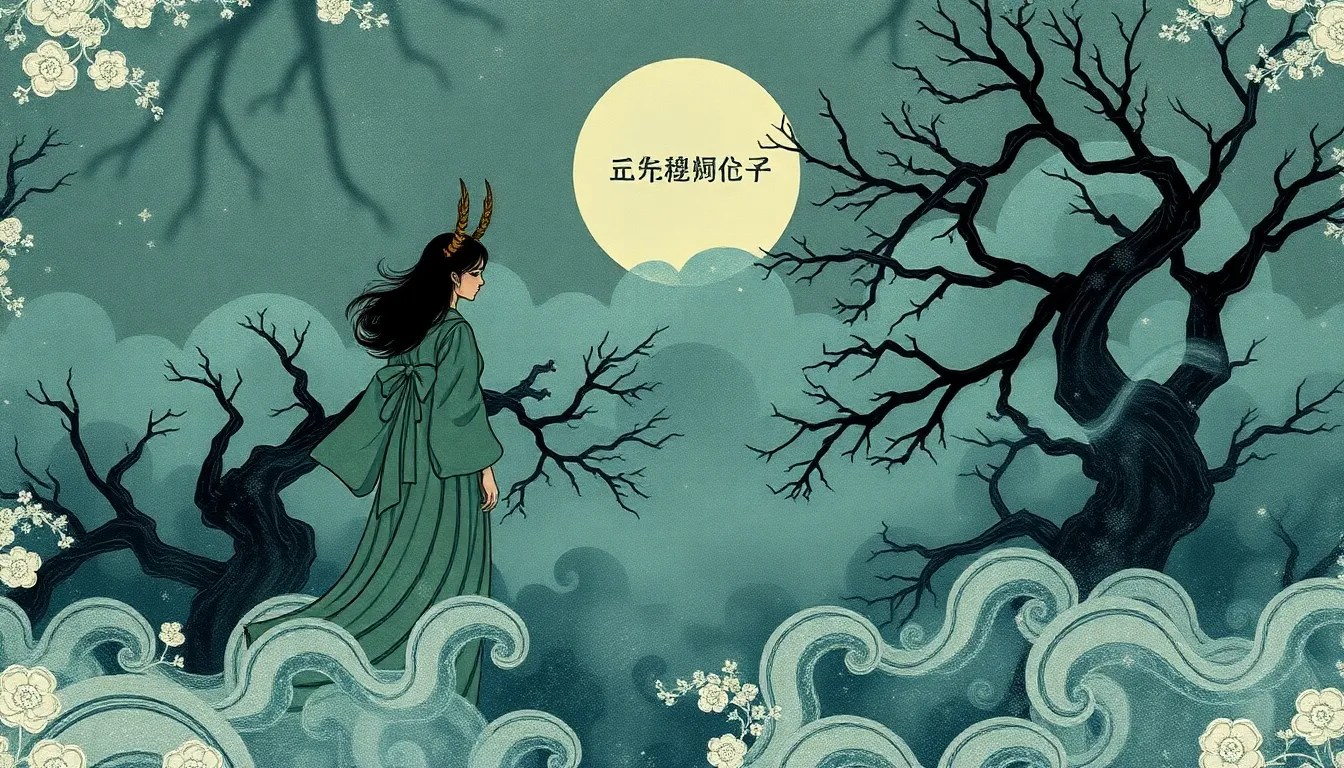The Role of Women in Japanese Ghost Stories: Haunting Narratives
I. Introduction
Japanese ghost stories, known as Yurei and Kaidan, have long captivated audiences with their eerie tales of the supernatural. These narratives often delve into the complexities of life, death, and the human experience, revealing deep cultural insights. A significant aspect of these ghost stories is the portrayal of women, who frequently play central roles that reflect societal values, fears, and expectations.
This article aims to explore the significance of women in Japanese ghost stories, examining their roles as both victims and avengers, and how these narratives provide insight into the historical and cultural context of Japan.
II. Historical Context of Women in Japanese Folklore
To understand the role of women in Japanese ghost stories, it is essential to consider the historical context of gender roles in Japanese society.
A. Traditional gender roles in Japanese society
Historically, Japanese women were often confined to the domestic sphere, expected to fulfill roles as mothers and wives. This traditional view shaped the narratives surrounding women in folklore, where they were frequently depicted as nurturing figures.
B. Women as both nurturers and avengers in folklore
While women were seen as caretakers, they also embodied themes of vengeance when wronged. This duality is reflected in ghost stories where women, after suffering betrayal or loss, transform into vengeful spirits.
C. Evolution of female characters in ghost stories
Over time, the portrayal of women in these stories has evolved, reflecting changing societal attitudes towards gender and power. As Japan modernized, female characters began to exhibit more agency and complexity, challenging traditional roles.
III. Common Themes in Female Ghost Narratives
Female ghost narratives in Japanese folklore often explore several recurring themes that resonate deeply with cultural and emotional experiences.
A. Themes of love, betrayal, and vengeance
Many ghost stories center around tragic love stories where betrayal leads to the ghost’s return for revenge. These narratives often highlight the intense emotions associated with love and loss.
B. The representation of grief and loss
Grief is a predominant theme in many ghost stories, where the spirit of a woman returns to mourn her untimely death or the loss of a loved one, illustrating the deep connection between life and death.
C. Transformation and redemption of female spirits
In some narratives, female spirits undergo transformations that reflect their journeys towards redemption. These stories often depict the struggle between the spirit’s desire for vengeance and the need for peace.
IV. Iconic Female Ghosts in Japanese Lore
Several iconic female ghosts in Japanese folklore stand out for their haunting narratives and significant cultural impact.
A. The legend of Okiku and her haunting
Okiku, a servant girl who was wrongfully accused of losing a valuable plate, is a famous ghost whose story reflects themes of betrayal and vengeance. After her death, she returns as a spirit, counting to nine, symbolizing her undying quest for justice.
B. Yotsuya Kaidan and the tale of Oiwa
Oiwa’s story in Yotsuya Kaidan is one of the most famous ghost tales, where she is betrayed by her husband and subjected to a horrific transformation. Her ghost seeks revenge, becoming a powerful symbol of female rage and sorrow.
C. Other notable figures: Rokurokubi, Yuki-onna, and more
- Rokurokubi: A spirit that can stretch her neck at night, representing the dual nature of women as both beautiful and frightening.
- Yuki-onna: The snow woman, a spirit associated with winter, embodies beauty and danger, often luring men to their deaths.
V. Symbolism of Women in Ghost Stories
Women in Japanese ghost stories are laden with symbolism, reflecting various societal fears and expectations.
A. Women as symbols of societal fears and expectations
The portrayal of female ghosts often mirrors societal anxieties about women’s roles and behaviors, serving as a reflection of cultural norms and expectations.
B. The duality of nurturing and destructive feminine power
Female ghosts embody both nurturing qualities and destructive power, illustrating the complexities of femininity in a patriarchal society.
C. Ghosts as reflections of historical and cultural anxieties
These narratives often serve as cautionary tales, reflecting the historical context of women’s rights and the cultural anxieties surrounding their roles in society.
VI. The Influence of Gender on Ghost Storytelling
The gender of storytellers can significantly influence the narratives surrounding female ghosts.
A. Perspectives of male vs. female storytellers
Male storytellers may portray women in more traditional, often victimized roles, whereas female storytellers might bring a nuanced perspective that highlights women’s agency and complexity.
B. Gender dynamics in the creation and interpretation of ghost tales
The dynamics of gender can shape both the creation and interpretation of ghost stories, affecting how audiences perceive the female characters.
C. Contemporary shifts in storytelling around female ghosts
In modern storytelling, there has been a notable shift towards more empowered portrayals of female ghosts, reflecting changing societal attitudes and values regarding gender.
VII. Modern Adaptations and Representations
The impact of film and literature has brought new life to traditional ghost stories, reshaping the portrayal of female ghosts.
A. The impact of film and literature on ghost stories
Films and literature have adapted classic ghost tales, often reinterpreting female characters to reflect contemporary issues and themes.
B. Notable contemporary works featuring female ghosts
Works such as The Ring and Ju-on showcase female ghosts who embody both horror and tragedy, resonating with modern audiences.
C. Changes in the portrayal of women in modern narratives
Modern narratives often depict women as complex characters with agency, moving away from traditional victim roles and embracing themes of empowerment and resilience.
VIII. Conclusion
In summary, the role of women in Japanese ghost stories is multifaceted, reflecting societal values, fears, and the evolution of gender roles throughout history. Through themes of love, betrayal, and vengeance, female ghosts serve as powerful symbols of both nurturing and destructive forces.
The lasting impact of these narratives invites further exploration into their cultural significance, encouraging a deeper understanding of the complexities surrounding femininity in Japanese folklore.



